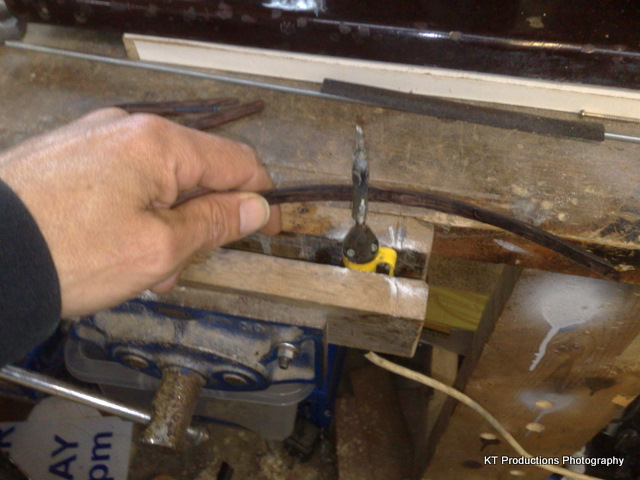Jacob":3e711c96 said:
TheTiddles":3e711c96 said:
...
Steam could be hotter if it's pressurised,
Or heated at the same pressure. "Water vapour" that is - not visible "steam" which is water vapour condensing back to water droplets.
The relationship is PV/t = c
Thank you, I appreciate your apology for being wrong and the diligence of actually providing the equation to show this.
Of course I jest, we all know it isn't possible for Jacob to be wrong or to ever learn from anyone, which is why he's so well regarded as a source of wisdom.
For those who might have a passing interest, the part of the equation he eludes to is the "ideal gas equation" which says:
PV=nRT
where:
P is the pressure
V is the volume
n is the amount of substance of the gas (in moles)
R is the gas constant (8.314 J·K−1mol-1)
T is the absolute temperature
Ok, suspend reality and any questions for just a second whilst I explain the first bit...
The amount of gas isn't changing and we know the value of "R" we need so we can call these a constant like, ermmm, c.
So now we have:
PV=cT or PV/T=c as our such learned chum says.
What this means is that if I increase T, either P or V has to increase, so that P x V still equals c x T. So to increase temperature the volume has to increase or pressure must. As we are talking about an un-sealed system, i.e. a steam bending oven, the volume can increase but then the steam is just going to go out the hole at the end into the atmosphere, thereby reducing the temperature of the steam in the oven. The only way to increase the temperature would be to keep that volume the same and increase the pressure (i.e. a pressure cooker)... that's that one dealt with.
Now, where I mentioned suspending reality earlier is because of this, steam isn't always an "ideal gas". In atmospheric pressure it's actually a mixture of gas and liquid normally (called "wet steam"). Steam is a clear fluid, the white stuff we call steam is condensed liquid water droplets in amongst the steam caused by contact with the colder air which is mixed amongst it all. So that equation, whist useful for showing why people shouldn't use formulas they don't understand, isn't actually very helpful here.
What the so highly educated Jacob may be confusing things with, is what is known as saturated steam which can then be heated up much hotter by a process called superheating. To do this, you take steam and take it AWAY from the source of more water and add heat, you have to remove the source of more water other wise the energy you want to heat the steam will just go into evaporating the water instead of heating the steam, this source of water may be other wet steam around your locally heated bit of steam. Now, if you do this (like you do in a steam driven locomotive, ship's boiler, nuclear power station etc...) then you can heat the steam to much higher temperatures than the water at the same pressure. Of course to do this in your steam bender for woodwork (returning to the post topic at last!) you'd need to heat the pipes going from the boiler to the chamber, or the chamber itself, as well an installing a little gadget I'll come onto in a minute, which you wouldn't, so the steam would only ever be at 100c and cooling rapidly as you move from the boiler to the chamber. Not exactly cutting edge science, they've known this for a good few hundred years which is why there is a component called a "steam regulator" which separates the boiler from the superheater in steam engines to stop the liquid water taking the heat that you want to go into your steam.
So there you go, I wonder what reaction there will be but I think I already know.
Aidan




































